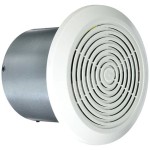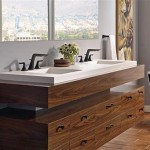Black Little Bugs in the Bathroom: Identification, Causes, and Removal
The discovery of small, black bugs in a bathroom can be a disconcerting experience. These unwanted guests often indicate underlying issues within the home, ranging from poor sanitation to plumbing problems. Identifying the specific type of bug is crucial for determining the most effective removal strategies and preventative measures. This article provides a comprehensive overview of common black bugs found in bathrooms, the factors contributing to their presence, and methods for their elimination.
Common Types of Black Bugs Found in Bathrooms
Several types of small, black bugs may inhabit bathrooms. Understanding their characteristics is key to accurate identification. Some of the most common culprits include drain flies, springtails, carpet beetles, and certain types of beetles that thrive in damp environments. Distinguishing between these insects requires careful observation of their size, shape, behavior, and preferred habitats within the bathroom.
Drain flies, also known as moth flies or sewer gnats, are small, fuzzy insects with a distinctive moth-like appearance. They are typically dark gray or black and measure approximately 1/8 inch in length. Drain flies are often found near drains, sinks, and showers, as they breed in the organic matter that accumulates within these plumbing fixtures. Their slow, fluttering flight pattern is another identifying characteristic.
Springtails are tiny, wingless insects that can range in color from white to gray to black. Most bathroom infestations are black, however. They are characterized by their ability to jump considerable distances, a behavior facilitated by a specialized appendage on their abdomen. Springtails thrive in damp environments with high humidity and are often found in soil, leaf litter, and decaying organic matter. In bathrooms, they may be present in potted plants, under sinks, or in areas with water leaks.
Carpet beetles are small, oval-shaped insects that are known for their destructive habits, particularly their larvae. While the adult beetles are often found near windows, feeding on pollen, the larvae feed on natural fibers such as wool, silk, and cotton. In bathrooms, carpet beetle larvae may infest rugs, towels, or clothing stored in hampers. Carpet beetles can be black but are also found in mottled, darker colors.
Certain types of beetles, such as drugstore beetles or flour beetles, may occasionally be found in bathrooms, particularly if food or other organic materials are stored nearby. These beetles are typically small, dark brown or black, and have a hard, shell-like exoskeleton. They are attracted to stored food products and may enter bathrooms in search of sustenance.
Factors Contributing to Black Bug Infestations in Bathrooms
The presence of black bugs in bathrooms is often indicative of specific environmental conditions that favor their survival and reproduction. These conditions typically involve moisture, organic matter, and access points for entry. Addressing these underlying factors is essential for preventing future infestations.
Moisture is a primary attractant for many types of bathroom bugs. Leaky pipes, dripping faucets, and inadequate ventilation can create the humid environment that these insects need to thrive. Drain flies, in particular, require standing water and organic sludge for breeding. Springtails also depend on damp conditions for survival, as they are prone to desiccation in dry environments. Regular inspection and repair of plumbing fixtures are crucial for eliminating sources of moisture. Improving ventilation by opening windows or using a bathroom fan can also help reduce humidity levels.
Organic matter serves as a food source and breeding ground for many bathroom bugs. Hair, soap scum, and other debris that accumulate in drains, sinks, and showers provide sustenance for drain flies and other insects. Carpet beetles and beetles in search of food, such as flour or drugstore beetles, find organic food sources in the bathroom. Regularly cleaning drains and surfaces to remove accumulated debris is essential for preventing infestations. Using drain cleaners or enzymatic treatments can help break down organic matter in drains and eliminate breeding sites for drain flies.
Access points can allow insects to enter bathrooms from outside or other areas of the house. Cracks and crevices in walls, floors, and around plumbing fixtures can provide entry points for small bugs. Gaps around windows and doors can also allow insects to enter. Sealing these access points with caulk or sealant can help prevent insects from entering the bathroom. Inspecting and repairing any structural damage to the bathroom can also help eliminate potential entry points.
Strategies for Eliminating Black Bugs in Bathrooms
Effective elimination of black bugs in bathrooms requires a multi-faceted approach that addresses both the immediate infestation and the underlying causes. This may involve cleaning, repairing plumbing, using insecticides, and implementing preventative measures. The specific strategies will depend on the type of bug and the severity of the infestation.
Thorough cleaning is a fundamental step in eliminating bathroom bugs. This includes cleaning drains, sinks, showers, and other surfaces to remove accumulated debris and organic matter. Using a brush or drain snake to scrub the inside of drains can dislodge and remove accumulated sludge. Cleaning floors and walls with a disinfectant cleaner can help eliminate bacteria and fungi that can attract insects. Regularly cleaning bathroom mats and rugs can also help remove potential food sources and hiding places for bugs.
Repairing plumbing leaks and improving ventilation are essential for addressing the moisture issues that contribute to bug infestations. Fixing leaky faucets, pipes, and showerheads can eliminate standing water and reduce humidity levels. Improving ventilation by opening windows or using a bathroom fan can help dry out the bathroom and make it less attractive to insects. Addressing any structural damage to the bathroom, such as cracks in walls or floors, can also help eliminate potential breeding sites and entry points.
Insecticides can be used to control severe infestations, but they should be used with caution and according to the manufacturer's instructions. Insecticide sprays or aerosols can be used to treat areas where bugs are present, such as around drains, sinks, and showers. However, it is important to avoid spraying insecticides directly on food preparation surfaces or in areas where children or pets may be exposed. Insecticide dusts can be used to treat cracks and crevices where bugs may be hiding. Boric acid is a relatively safe and effective insecticide that can be used to control many types of bathroom bugs. Professional pest control services may be necessary for severe or persistent infestations.
Preventative measures are crucial for preventing future infestations. These measures include maintaining a clean and dry bathroom, regularly inspecting and repairing plumbing fixtures, and sealing potential entry points. Storing food and other organic materials in airtight containers can also help prevent infestations. Using dehumidifiers can help reduce humidity levels in bathrooms and make them less attractive to insects. Regularly cleaning drains with enzymatic drain cleaners can help prevent the accumulation of organic matter and eliminate breeding sites for drain flies. Practicing good sanitation habits can help prevent future infestations and maintain a bug-free bathroom.
Implementing a combination of identification, sanitation, plumbing maintenance, and appropriate pest control methods can effectively eliminate black bugs in the bathroom and prevent their return. Regular vigilance and preventative measures are essential for maintaining a healthy and pest-free home environment.

Tiny Black Bugs And Other Common Bathroom Pests

What Are These Little Black Beetles In My House Alta Pest Control

What Are These Little Black Beetles In My House Alta Pest Control

Bathroom Bugs Identification Guide How To Get Rid Of Each Type A Z Animals

Why Black Bugs On Your Bathroom Ceiling Are A Sign Of An Even Bigger Problem
What Are These Tiny Black Bugs That Look Like Poppy Seeds

Little Black Flying And Walking Insects In My Bathroom

Black Carpet Beetle Control Plunkett S Pest

Tiny Black Bugs In Bathroom Bedroom Windows And Basement Bugguide Net

Bathroom Bugs Identification Guide How To Get Rid Of Each Type A Z Animals







